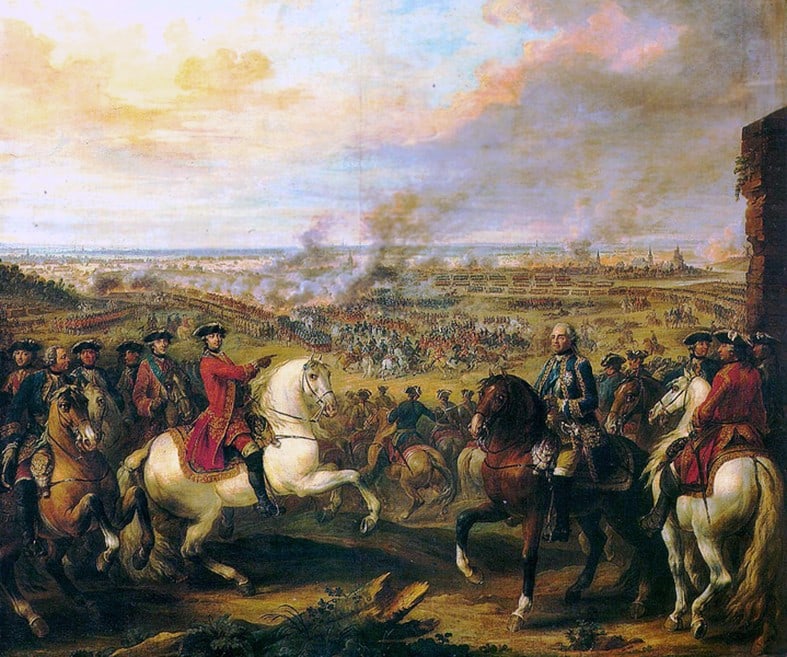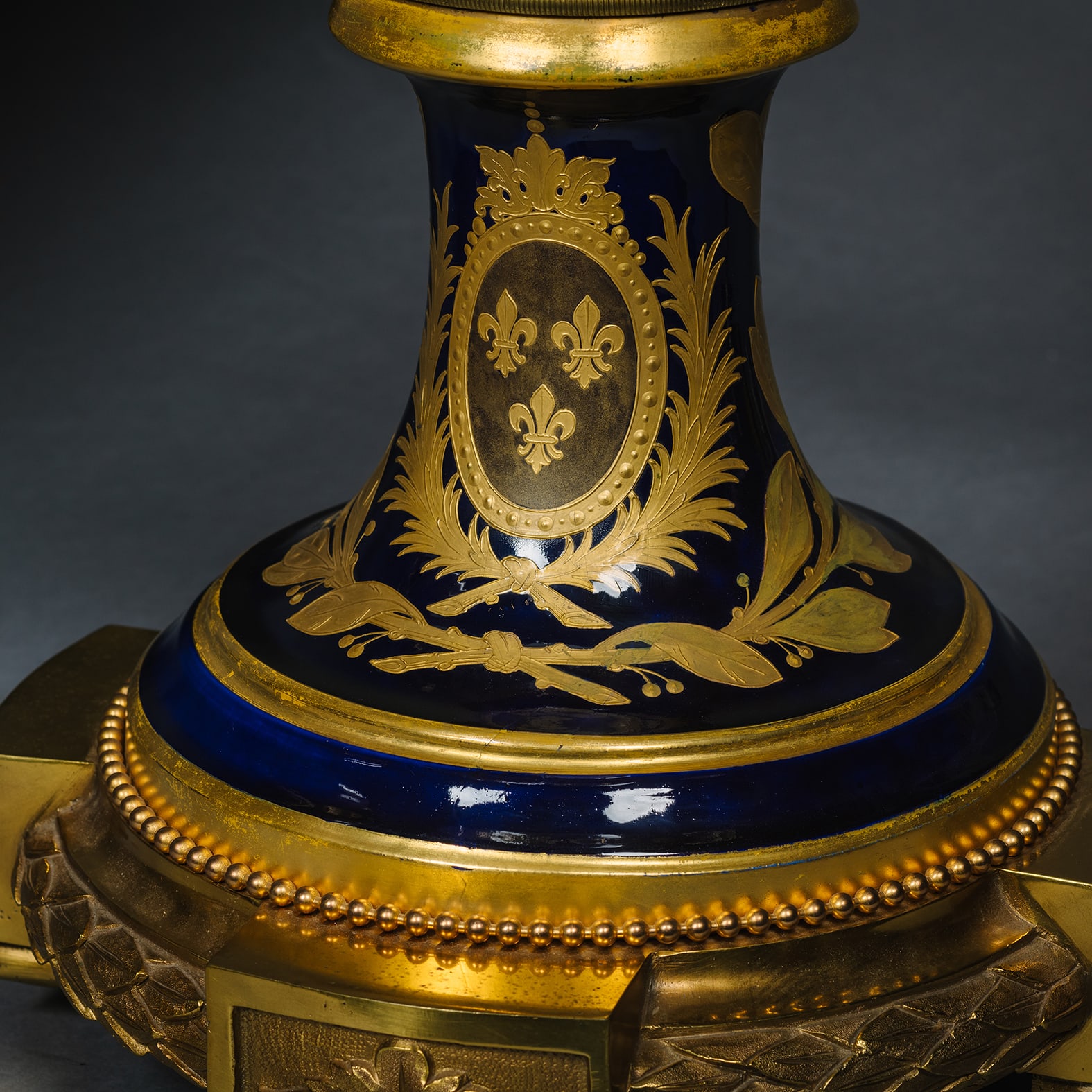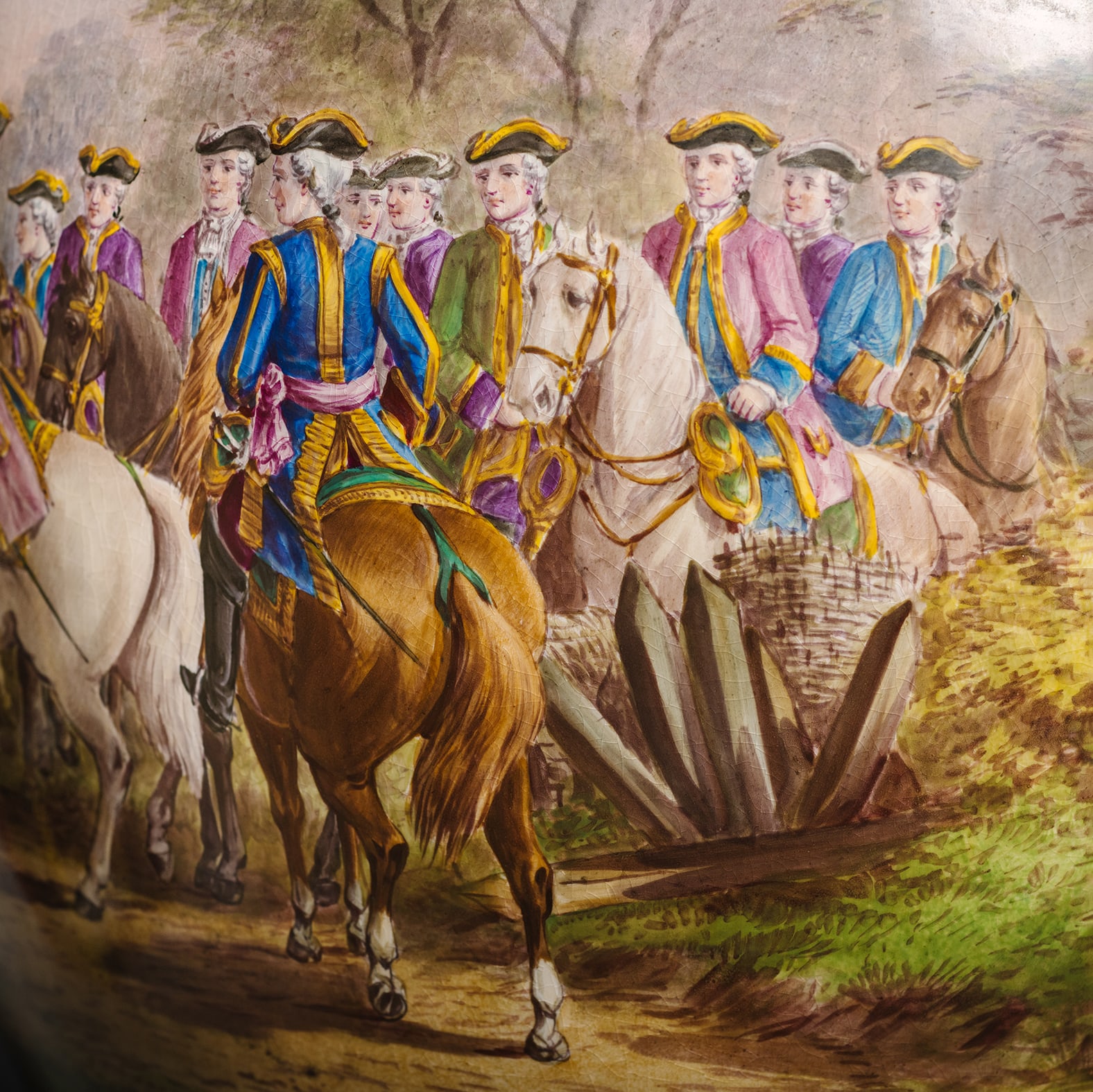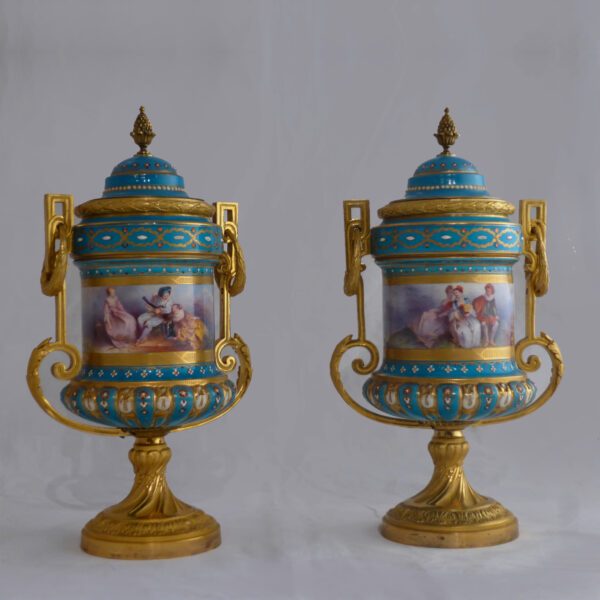Севр (стиль)
A Pair of Large Sèvres-Style Porcelain Vases and Covers
£95,000
A Pair of Large Gilt-Bronze Mounted Sèvres-Style Cobalt Blue Ground Porcelain Vases and Covers. Signed 'H. Desprez'. Each of baluster form. One...
Размеры
Height: 112 cm (45 in)Ширина: 53 см (21 дюйм)
Depth: 40 cm (16 in)
Описание
A Pair of Large Gilt-Bronze Mounted Sèvres-Style Cobalt Blue Ground Porcelain Vases and Covers.
Signed ‘H. Desprez’.
Each of baluster form. One painted to the front with Louis XV and Maurice de Saxe at the Battle of Fontenoy. The other painted to the front with Louis XV and Maurice de Saxe at the Battle of Lauffeld. The reverse of each finely painted with a chateau in a parkland vista.
The lids with pomegranate finials above gilt-embossed crowns and crossed laurel branches symbolising victory and power. The necks and foot gilt-embossed with the Royal coats of arms of Louis XV of France against a cobalt blue ground. The bodies with gilt-bronze laurel swagged handles above parcel gilt detailing. Each on a circular gilt-bronze foot, cast with laurel and gilt patera.
Франция, около 1890 года
These vases are a celebration of King Louis XV of France. They are finely painted with scenes from two of Louis’ triumphant victories in the War of Austrian Succession.
Louis XV was fighting George II, who as both King of Great Britain and Elector of Hanover, supported the right of Maria Theresa, as a woman, to succeed her father, Emperor Charles VI, as ruler of the Habsburg monarchy. France, and others, saw this an opportunity to challenge Habsburg power.
The conflict raged between 1740 and 1748, with the outcome that France conquered most of the Austrian Netherlands, and Louis XV declared himself victorious. Louis XV had left Versailles to lead his armies in the Austrian Netherlands in person and the paintings to these vases celebrate his victories at the Battle of Fontenoy (1745) and the Battle of Lauffeld (1747).
At the Battle of Fontenoy, Louis XV was victorious over the British led by the Duke of Cumberland. Louis XV is shown on a white charger pointing towards the battlefield. Besides him, on a chestnut horse is Maurice, Count of Saxony, Marshall of France. The composition is inspired, with some artistic licence, from the celebrated painting of the Battle of Fontenoy by Pierre L’Enfant (1704–1787).

Pierre L’Enfant (1704–1787), ‘Battle of Fontenoy 1745’. Wikimedia Commons, Public Domain.
At the Battle of Lauffeld, King Louis XV was again victorious over a larger force led by the Duke of Cumberland. Louis XV is depicted similarly, showing his leadership by pointing towards the battlefield as he sits astride a white horse, with Maurice de Saxe beside him. The composition of the figures is drawn from a celebrated painting of the battle of Lauffeld by Louis Charles Auguste Couder (1789-1873). Both original paintings are displayed in the magnificent Gallery of the Battles at the Palace of Versailles.

Auguste Couder (1789-1873), ‘Bataille de Lawfeld’ 1836, Wikimedia Commons, Public Domain.
The depiction of Louis XV military triumphs is befitting for these Sèvres-Style vases which embody the glory of France and were produced as historicist works during the late nineteenth century revival for ‘tous les Louis’. In choosing to paint these battle scenes for their French historical significance, the artist H. Desprez also, with great care, finds symmetry in pairing two complimentary scenes of Louis XV and Maurice de Saxe, and succeeds in making these vases a magnificent and true pair.
Дата
Около 1900 года
Происхождение
Франция
Средний
Gilt-Bronze and Porcelain
Подпись
Signed H. Desprez
The Sèvres Porcelain Manufactory was founded to the east of Paris in the disused Royal Château of Vincennes, late in 1739-40. and moved to the village of Sèvres, west of Paris in 1756, en route to King Louis XV’s palace of Versailles.
Here it was also adjacent to Louis’s mistress Madame de Pompadour’s own château at Bellevue. She was delighted with the factory’s new location – as she knew she could entice Louis to take a greater interest in it when it was so near their own residences. Indeed, the King became such a keen patron of the factory that, when it ran into financial difficulties, he bought out the shareholders and became the sole proprietor. The factory remained a royal enterprise until the French Revolution, when it was nationalised.
The popularity of the Louis XV style during the nineteenth century led to a number of companies in and around Paris, creating exceptional Sèvres-Style porcelain based on eighteenth century models and to the same exceptional quality. Often these pieces were of exhibition quality and scale, and finely painted by the best studio painters of the day such as Robert, Desprez and Poitevin.






















 Печать
Печать


